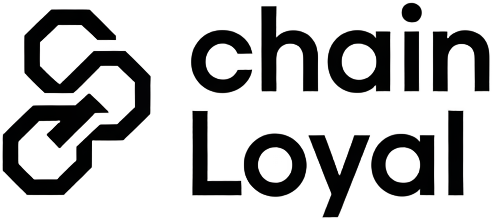
On-chain loyalty staking is fundamentally reshaping how NFT holders engage with decentralized finance. Rather than letting prized digital collectibles sit idle, users are now empowered to unlock value, utility, and community status through innovative staking mechanisms. As the DeFi landscape matures in 2025, platforms are racing to offer NFT holder rewards that go beyond simple airdrops, combining non-custodial NFT staking, time-based staking bonuses, and multi-chain flexibility to create compelling token-based loyalty programs.

How On-Chain Loyalty Staking Mechanisms Work for NFT Holders
The core appeal of on-chain loyalty staking lies in its transparency and automation. Smart contracts form the backbone of these systems, enabling NFT holders to lock their assets directly into secure protocols without intermediaries or custodians. This non-custodial approach ensures full ownership at every step while distributing NFT staking rewards according to programmable rules.
Most programs operate as follows: users deposit (or “stake”) their NFTs into a contract for a set period. The rarity or traits of each NFT can influence the reward schedule – for example, ultra-rare collectibles may yield higher token payouts or unlock unique digital assets. Some platforms introduce time-based staking bonuses that multiply returns the longer an NFT remains staked. The result is an environment where patience and loyalty are tangibly rewarded.
With interoperability now a reality across leading blockchains, multi-chain platforms let users stake NFTs wherever they hold them – whether on Ethereum mainnet or emerging L2s – increasing both accessibility and reward potential.
Strategies for Maximizing DeFi Loyalty Incentives
For projects designing these programs, success hinges on more than just lucrative yields. The most effective strategies start by defining clear objectives: is the goal to drive long-term holding, boost secondary market activity, or deepen community engagement? Once objectives are set, projects can design unique NFTs that act as both collectibles and access tokens with special privileges – think exclusive content drops or early event access.
User experience is also paramount. Seamless onboarding flows that guide users from minting to staking to redemption minimize friction and maximize participation. Forward-thinking teams incorporate social elements too: online communities for stakers, leaderboard competitions based on time staked, and campaigns encouraging users to showcase their staked NFTs all help foster belonging and excitement.
The Benefits: Passive Income, Enhanced Utility and Community Belonging
Why are so many crypto enthusiasts flocking to on-chain loyalty staking? The answer lies in a trifecta of benefits:
- Passive Income Generation: By locking up NFTs instead of selling them outright, holders earn regular token rewards – often with APYs competitive with leading DeFi protocols.
- Enhanced Utility: Staking transforms static digital art into dynamic tools for earning and participation. This functional upgrade increases demand (and often price) for sought-after collections.
- Exclusive Experiences: Many projects reward loyal stakers with gated content or VIP perks unavailable elsewhere – from metaverse events to early access game features.
- Community Engagement: Active participants frequently gain governance rights or ecosystem influence as part of their reward package.
The net effect? Both users and brands win: holders unlock new earning avenues while projects cultivate deeper relationships with their most dedicated supporters. For those seeking more insight into how these dynamics drive engagement across DeFi communities, further reading is available at this detailed guide.
As NFT staking rewards mature, the value proposition for holders continues to expand. Gone are the days when NFTs were simply collectibles languishing in digital wallets. Today’s on-chain loyalty staking programs offer a sophisticated blend of financial incentives and social capital, all managed through transparent, non-custodial smart contracts. This shift is empowering both seasoned DeFi investors and newcomers to participate in token-based loyalty programs that deliver tangible returns while reinforcing project ecosystems.
One of the most compelling aspects of modern NFT staking is the diversity of reward structures now available. Some protocols introduce tiered reward systems, where longer lock-up periods or higher-value NFTs unlock exponentially greater rewards. Others implement dynamic APY models, adjusting yields based on overall platform activity or community milestones. These mechanisms not only incentivize early and sustained participation but also create a gamified environment that keeps users actively engaged.
Overcoming Barriers: Non-Custodial Staking and User Empowerment
A key innovation driving adoption is the rise of non-custodial NFT staking. Unlike traditional custodial solutions, non-custodial platforms allow users to retain full control over their assets at all times. This eliminates counterparty risk and aligns with DeFi’s ethos of user sovereignty. The result: increased trust and broader participation from security-conscious NFT holders.
Interoperability is another game-changer. Multi-chain staking support means users are no longer siloed by network choice; they can stake across Ethereum, Polygon, or emerging L2s, maximizing both flexibility and yield opportunities. This cross-chain capability is especially attractive as more projects launch exclusive collections on different blockchains, and as liquidity fragments across ecosystems.
Navigating Risks and Tax Considerations
While the benefits are substantial, it’s important for participants to remain aware of potential risks. Smart contract vulnerabilities remain a concern, underscoring the need for platforms to conduct rigorous audits and maintain transparent codebases. Additionally, holders should be mindful of evolving tax regulations around NFT staking rewards, many jurisdictions now classify these earnings as taxable events, requiring careful record-keeping.
Education plays a critical role here: top platforms provide clear documentation outlining both technical risks and compliance best practices so users can make informed decisions before locking up valuable digital assets.
What’s Next for Token-Based Loyalty Programs?
The future of on-chain loyalty staking looks bright as new features continue to roll out. Expect further integration with real-world brands seeking to build Web3-native communities via tokenized rewards systems. We’re also likely to see increased experimentation with time-based staking bonuses, rewarding those who demonstrate true loyalty by keeping their NFTs staked over extended periods.
Ultimately, on-chain loyalty staking is creating a more participatory digital economy, one where NFT holders are not just spectators but active contributors with real earning potential and influence over project direction.






